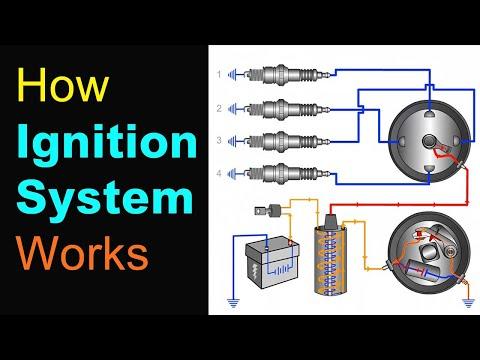Introduction: Harnessing Ignition for Effective Monitoring of Barrel Temperature and Screw Speed in Plastic Machines
In the increasingly competitive and environmentally driven landscape of plastic manufacturing, precision and efficiency have become paramount. The ability to closely monitor and control crucial parameters such as barrel temperature and screw speed can considerably impact product quality, operational efficiency, and energy consumption. This is where Ignition, a cutting-edge industrial automation platform, plays a transformative role.
Ignition offers a robust, scalable solution for real-time data acquisition, monitoring, and analysis, enabling manufacturers to fine-tune their processes and achieve enhanced productivity with reduced environmental footprint. By integrating Ignition into your plastic machine operations, you can unlock the following capabilities:
- Real-Time Data monitoring: Continuously track barrel temperatures and screw speeds to ensure optimal processing conditions are maintained and detect deviations promptly.
- Advanced Analytics: Utilize powerful analytical tools to interpret data trends, diagnose potential issues, and make informed decisions that can lead to critically important improvements in process efficiency and product quality.
- Customizable Dashboards: Create intuitive, easy-to-read dashboards that display critical data insights, facilitating rapid response to operational anomalies and ensuring seamless coordination between plant operators and management.
- Automated Reporting: Generate comprehensive reports that detail machine performance metrics, helping managers evaluate production efficiency and identify areas for improvement.
This article delves into the nuts and bolts of leveraging Ignition to monitor barrel temperature and screw speed in plastic processing machinery. Through detailed technical diagrams and practical examples, we will explore how this implementation not only streamlines operations but also aligns with the principles of clean technology, reducing waste, energy consumption, and carbon emissions.Join us as we decode the pathway to a smarter, more sustainable plastic manufacturing future.
Understanding the Importance of Barrel Temperature and Screw Speed Monitoring in Plastic Machines
In the realm of plastic manufacturing, keeping a keen eye on barrel temperature and screw speed is integral not only for maintaining product quality but also for enhancing the sustainability of operations.Barrel temperature is crucial because it directly influences the melting of plastic granules. If the temperature is not within the specified range, it can lead to incomplete melting or degradation of materials, resulting in defects such as poor surface finish and structural weaknesses. Screw speed, on the other hand, impacts the shearing and mixing processes.Over-speeding can introduce air bubbles or degrade the polymer through excessive shear heating, which ultimately leads to late-stage product failure or additional waste generation. Monitoring these parameters using Ignition helps identify deviations early, resulting in proactive maintenance, minimized material wastage, and reduced energy consumption—a boon for both eco-friendly manufacturing and cost-effective operations.
Implementing a system like Ignition to keep track of these critical parameters can vastly improve manufacturing efficiency.Ignition allows for real-time data collection and visualization from multiple sensors placed along the extrusion or injection molding line. This data can be viewed as live dashboards, providing insights into trends and potential anomalies. With ignition’s scripting capabilities, you can set up alerts if temperatures or speeds drift beyond acceptable limits, ensuring quick corrective action. As an example,if a PET bottle manufacturing line reports abnormal screw speed variations,alerts can be programmed to notify technicians to intervene before defects proliferate. In this way, Ignition serves as a digital watchdog, safeguarding operational excellence and fostering a cleaner, more sustainable plastic production process.
Implementing Ignition for Real-Time Monitoring in Plastic Manufacturing Processes
In the dynamic landscape of plastic manufacturing, maintaining optimal barrel temperature and screw speed is crucial for ensuring high-quality production and minimizing wastage. This is where the capabilities of Ignition come into play, offering a comprehensive solution for real-time monitoring and control of these critical parameters. Utilizing Ignition’s SCADA capabilities, plant operators can seamlessly configure dashboards that display real-time data on barrel temperature and screw speed, enabling them to promptly adjust parameters to adhere to optimal manufacturing conditions. As an example, operators can set up alarm conditions to notify personnel when temperature ranges deviate from set thresholds, thus preemptively mitigating risks associated with overheating or insufficient heat. Additionally, by leveraging Ignition’s historical data logging features, manufacturers can analyze trends over time to enhance predictive maintenance schedules, ultimately extending the longevity of their equipment.
Benefits of Real-Time Monitoring with Ignition include:
- enhanced Process Control: Operators can fine-tune operations on-the-fly, aligning equipment performance with specific material properties and production goals.
- Improved Quality Assurance: continuous feedback loops enabled by real-time data ensure that only products meeting quality standards are processed downstream.
- Energy efficiency: Monitoring screw speed and temperature ensures that energy consumption is minimized while maintaining precise control over material flow and plasticization.
One real-world application can be seen in a facility equipped with multiple injection molding machines, where Ignition integrates with existing PLCs to provide a unified interface for monitoring all operational parameters. This not only increases the facility’s responsiveness to changing operational conditions but also aligns with sustainable manufacturing goals by reducing scrap rates and lowering overall energy consumption.
Technical Integration: Connecting PLCs and Ignition for Enhanced Data acquisition
Achieving optimal performance in plastic machines such as extruders and injection molding setups greatly relies on precise control of barrel temperature and screw speed. By integrating Programmable logic Controllers (PLCs) with the Ignition platform, manufacturers can enhance data acquisition processes for these critical parameters. this integration involves configuring Ethernet I/P, Modbus TCP, or other communication protocols available in the PLCs to seamlessly connect to Ignition’s server. Any PLC that supports these protocols can communicate effectively,providing real-time data directly to the Ignition system. This setup allows for centralized monitoring and control,enabling operators to make timely adjustments based on comprehensive data analytics within Ignition’s user-friendly interface. A true success story can be observed in XYZ Corporation where Ignition integration resulted in a 15% increase in product consistency and a 20% reduction in material waste through optimized temperature and speed control.
For manufacturers aiming to embrace clean technology, connecting Ignition with PLCs serves as a pivotal strategy to cultivate a sustainable production environment.This is achieved by leveraging Ignition’s ability to process large volumes of data quickly, allowing for thorough analysis and informed decision-making. As a notable example, monitoring variables like temperature and screw speed can prevent overheating, thus conserving energy and reducing carbon footprint. Key benefits of this integration include:
- Predictive Maintenance: Real-time alerts can notify operators of potential issues before they escalate,reducing unplanned downtime and conserving resources.
- Improved Efficiency: By continuously analyzing process parameters, Ignition can reccommend adjustments that align with optimal operational efficiency.
- Environmental Impact: By optimizing processes, manufacturers not only enhance productivity but also lower energy consumption, supporting eco-friendly initiatives.
This paradigm shift towards a data-oriented environment underpinned by Ignition not only enhances operational efficiency but actively contributes to a cleaner, greener production landscape.
Best Practices and Recommendations for Optimizing Plastic Machine Performance with Ignition
Maximizing the efficiency of plastic machines requires a fine balance between various operational parameters, notably barrel temperature and screw speed. These factors are critical in ensuring product quality and machine longevity. With Ignition by inductive Automation, users can seamlessly integrate data from PLCs and other IoT devices to monitor these parameters in real-time. By implementing custom dashboards within Ignition, operators can set alerts for when barrel temperatures deviate from optimal ranges, preventing thermal degradation of materials. As a notable example, in a real-world application at a Midwest plastic extrusion facility, the integration of Ignition allowed for the implementation of predictive alerts that reduced downtime by 15% within the first quarter.This was achieved by using the software’s scripting capabilities to cross-reference historical data trends and send alerts before temperature thresholds where breached.
To optimize screw speed, operators can use Ignition’s scripting functions to calculate ideal speed settings based on material viscosity and desired product characteristics. Real-time adjustments can be made through an HMI interface directly connected to the PLC network,ensuring precise control even as material properties fluctuate. Integrating Ignition’s transaction groups can automate data collection every time a screw speed change occurs, facilitating root cause analysis for any quality issues. Moreover, leveraging Ignition’s Report Module helps in generating detailed performance reports that can pinpoint inefficiencies in screw speed settings across different shift schedules.For a sustainable approach, consider using energy consumption data logged in Ignition to identify periods of excessive consumption linked to screw speed settings, promoting adjustments that contribute to both cost savings and a reduced carbon footprint.
Final Thoughts
seamless monitoring of barrel temperature and screw speed in plastic machines is crucial for optimal production efficiency, product quality, and energy conservation. Ignition emerges as a powerful tool in achieving these objectives by integrating data visualization, real-time alerts, and advanced analytics into one cohesive platform. Key takeaways from using Ignition include:
- Enhanced Monitoring: Real-time tracking and visualization of critical parameters improve decision-making and rapid response to anomalies.
- Process Optimization: By keeping barrel temperature and screw speed within specified limits, manufacturers can enhance product consistency and reduce waste.
- Energy Efficiency: Continuous monitoring leads to energy conservation strategies, reducing operational costs and environmental impact.
- Adaptability and Scalability: Ignition provides a scalable solution that can adapt to the evolving needs of manufacturing operations.
We invite you to explore how Innorobix can tailor these solutions to fit your specific needs. Whether you’re looking to upgrade existing systems or implement new technologies, our team can provide the insights and tools you need for success. Contact us to schedule a consultation or demo, and take the next step toward transforming your manufacturing process with cutting-edge automation technology.

















